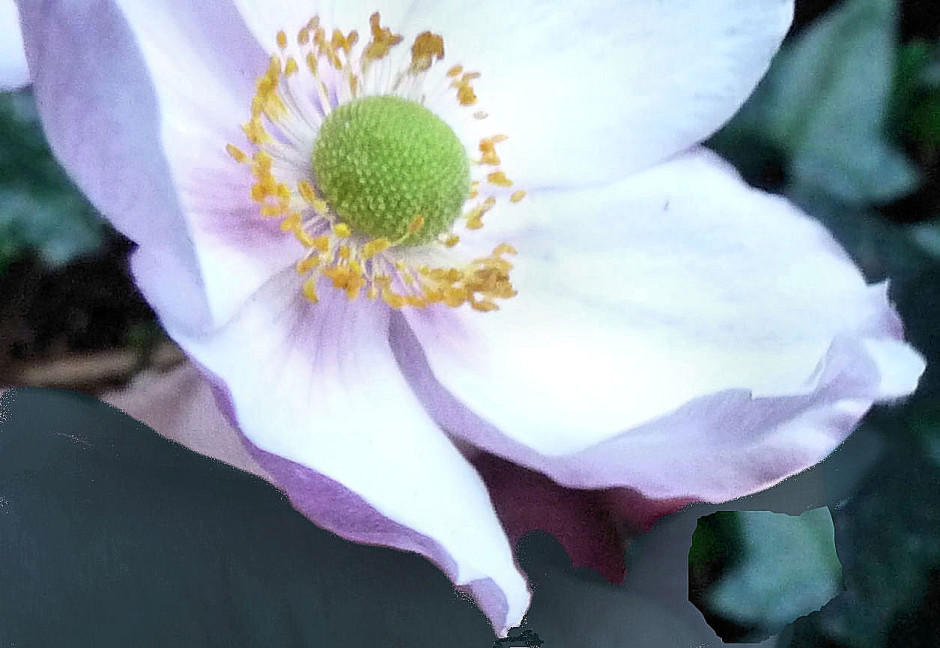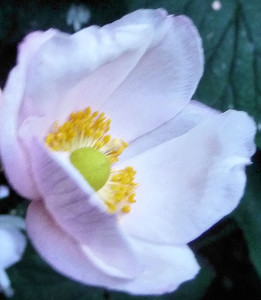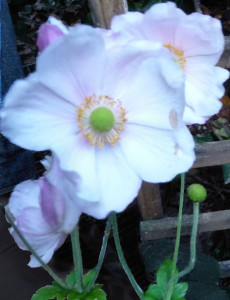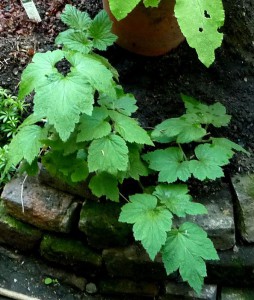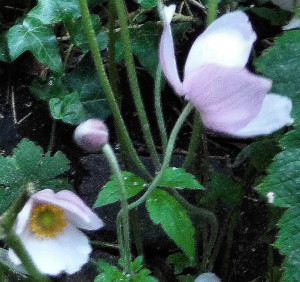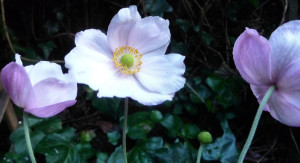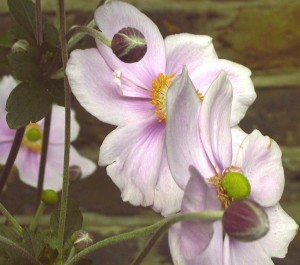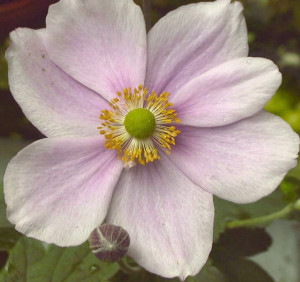JAPANESE ANEMONE (anemone x hybrida) Windflower
China
Japanese Anemones have large, mid-green leaves that form a rosette at ground level. Long, graceful stems rise from the rosette and, as summer fades, buds at the tops of the stems open into SOFT PINK or WHITE flowers that float in the breeze.
They grow well in sun and part shade, in fertile soil that is well drained but not waterlogged. But choose carefully where to plant these elegant flowers; once established, moving them may not be an option. They are slow to settle in but difficult to eradicate.
At our Capel Manor College class, we were shown windflowers in the gardens near the which? trial beds. They moved on an undulating screen of tall stems, showing how the flowers got their name.
http://www.capelmanorgardens.co.uk/which-gardening-at-capel-manor.html
From Wimbledon to Highbury
Here in Highbury, Japanese Anemones appear in front gardens in late summer and early autumn. So, after helping Anne dig a number of them out of her Wimbledon front garden, I was happy to accept her offer to bring two of them back to Highbury. We thought we had pulled up every one, but it seems that the tiniest morsel of root left behind will send up new stems, new flowers. Fragments of the plant left in the ground in Wimbledon grew new Windflowers.
Japanese anemones still grow in Anne’s front garden; it is as though they had never left. A brick pit or large pot may restrict their roots for some time. But, in an open garden, expect them to spread.
Two Highbury Windflowers
The two windflowers brought back from Wimbledon were potted up as plans were made to give them the best chance to succeed. One pot was given to a friend who taught special needs children in Tottenham. I got to see where they were to be planted.
As for the second plant, it was
Other names: Chinese Anemone, Thimbleweed.
